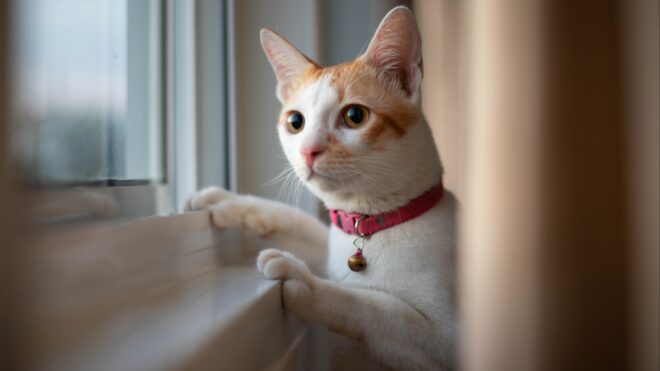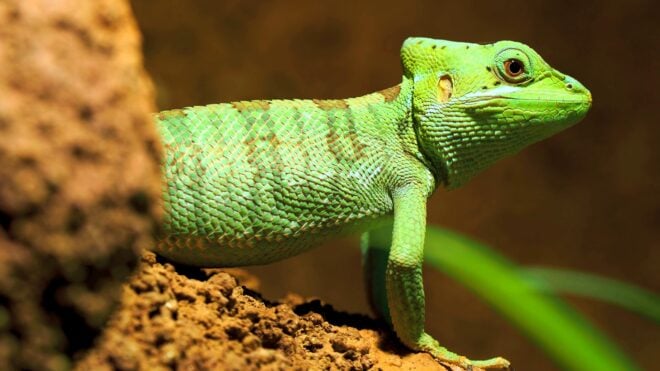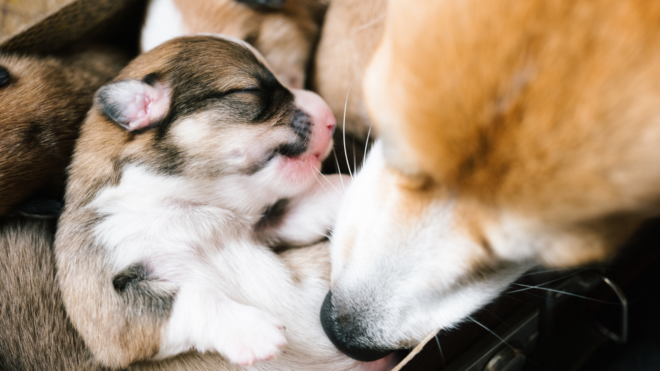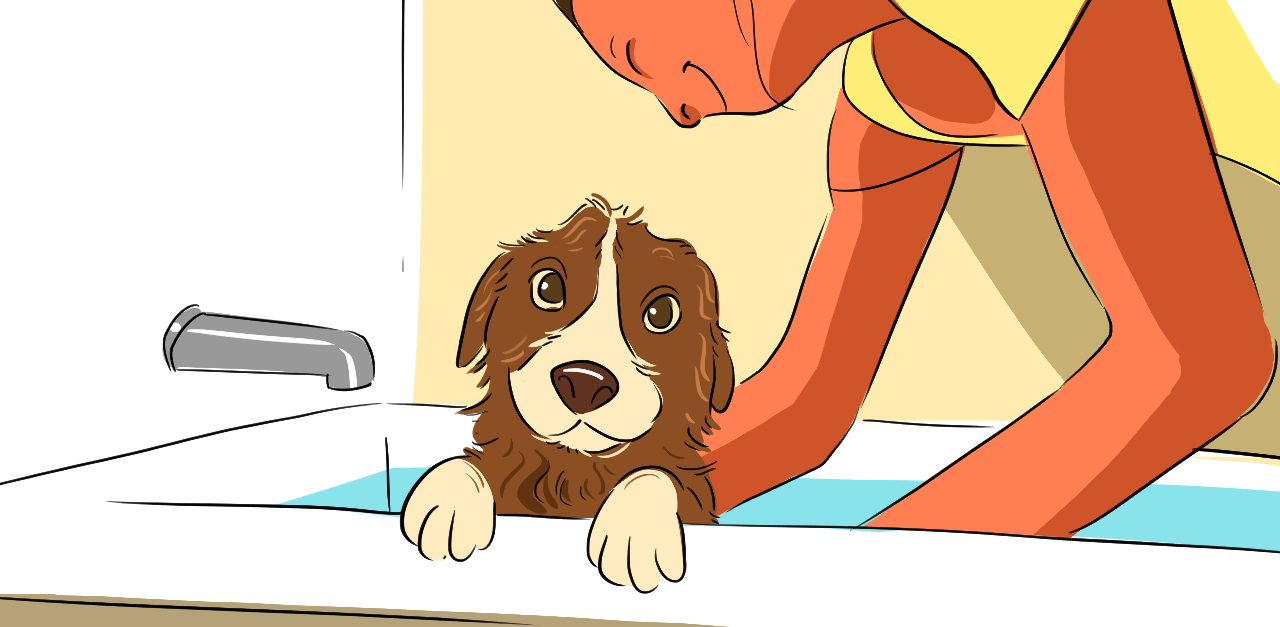
Whether your puppy is covered in mud after an enthusiastic day at the dog park or simply needs a routine wash to keep stinky fur at bay, it’s important to keep your pup clean. But when it’s time to give your puppy a bath, there are a few tips and tricks you should know to make it a successful experience.
If you’re wondering when to give your puppy her first bath, how often to bathe her, and what bathing accessories you’ll need, we can help you out. We also have all the details about what to be aware of while you’re cleaning your pup, what to watch out for after the bath, and what you need to know about (eek!) flea baths.
If you want bath time to be a fun experience for both you and your puppy, read on to find out all the info you need to know about puppy baths so that everyone will look forward to pup’s time in the tub.
When to Give Puppies Their First Bath
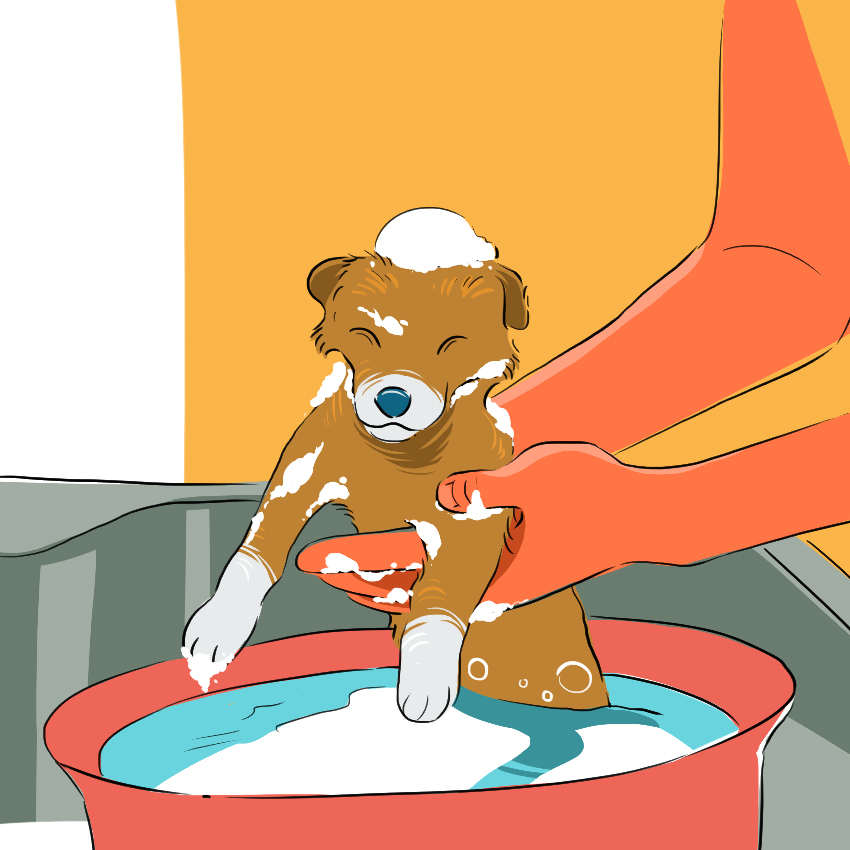
As far as when you should start bathing a new puppy, it’s best to begin as soon as possible. Establishing a bath-related routine early in a pup’s life helps make the experience normal and familiar, which will lead to fewer problems down the road. It helps puppies avoid any negative associations toward bath time that they might otherwise develop if you wait until they're older.
A good strategy for bath time is take your puppy on a long walk before giving her a bath so that she will burn off some of that extra puppy energy. And you should pop her in the tub before feeding so that she doesn’t have a full stomach in the bath — and so that you can use food after the bath as a reward for your dog.
How Often Does Puppy Need a Bath?
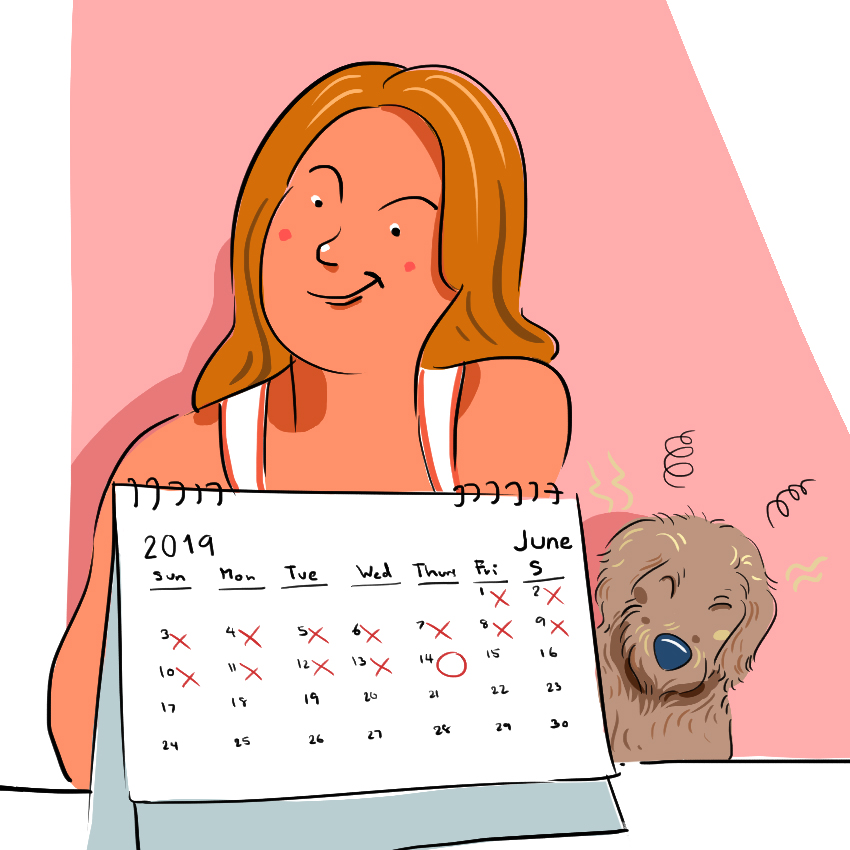
If your pup has spent time rolling around in something mysterious yet nasty, that's obviously a good time for a bath. But what about the spans of time in between?
Bath times for dogs can vary from weekly to every four to six weeks. When setting up bath schedules for puppies, there are a few factors to consider. These include the length of their coat, their breed, and their lifestyle — for instance, does your pup spend most of the day inside where it's clean? Or outside getting dirty and sweaty?
Be careful to not bathe your puppy too much so that you don’t strip away the natural oils in her coat and cause irritation to her skin. One way to keep your pup clean in between baths is with a nice daily brushing. But most of the time, a quick sniff test is sure to let you know when bath time is necessary.
What You’ll Need for the Bath
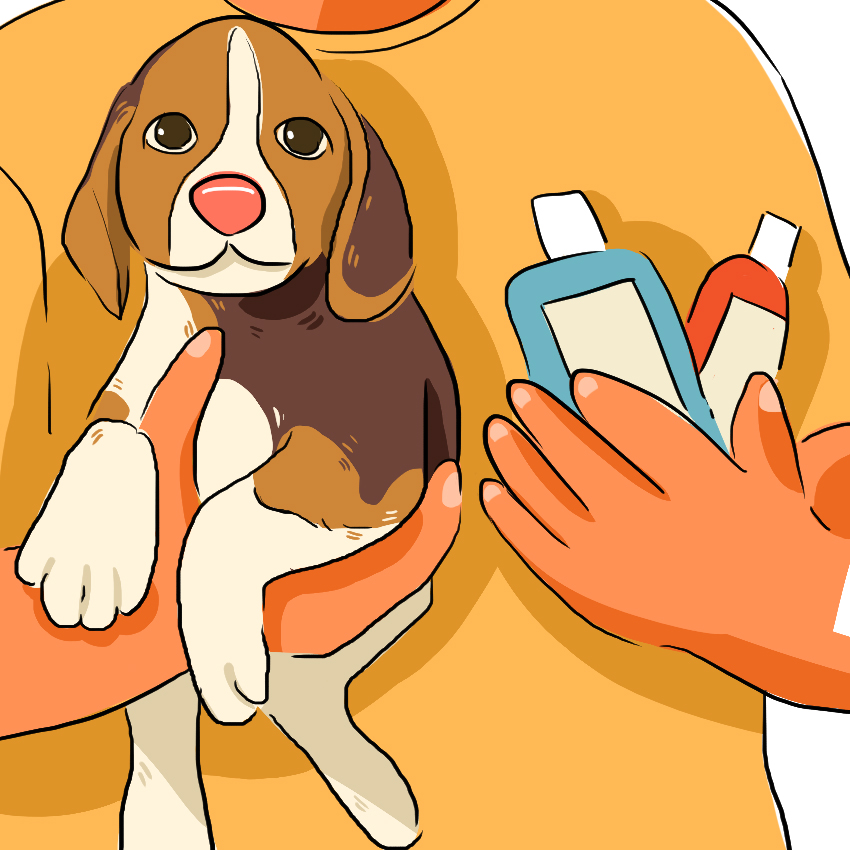
Before you commit to that first drop of water on your puppy, make sure you have everything you need within reaching distance, unless you’re looking for a cartoon-style wet-dog chase around the house.
Be sure to have shampoo, towel(s), and maybe a bucket or cup for water — depending on the size of your dog and whether you’re bathing your puppy in the bath or shower or outside with the hose. Pick a shampoo that is specifically for dogs, and try to use a tear-free product. You can also pick up a detachable shower sprayer that will make the process even easier.
Make It Fun, and Be Patient
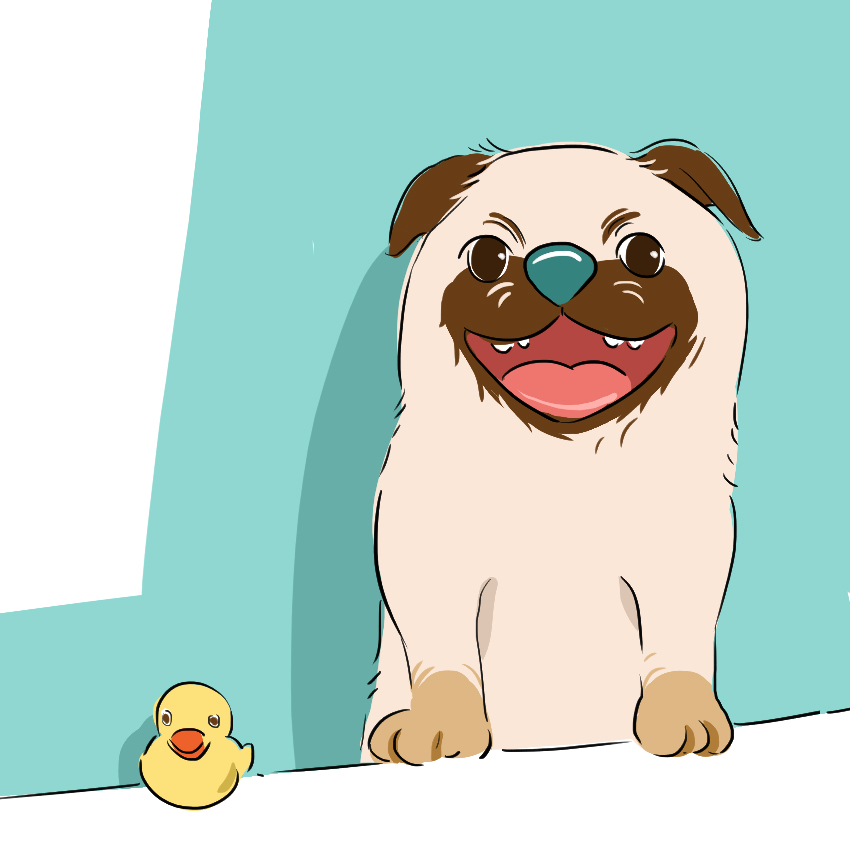
Bath time should always be a positive experience for your puppy. Use encouraging and happy tones while you bathe your pup, and give lots of praise before, during, and after. And for the more reluctant bathers, there are even dog bath toys to keep them interested.
Pick a Tub That Suits Your Pup’s Size
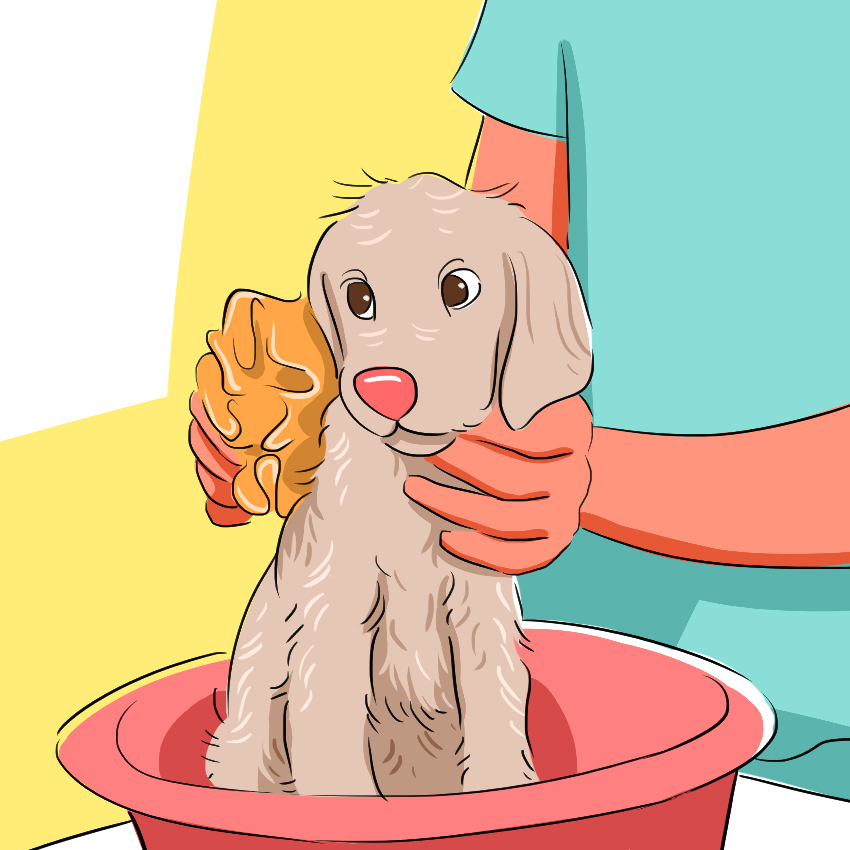
Washing your Saint Bernard in your bathroom sink isn’t the best idea, and you might lose your teacup Chihuahua in a spacious Jacuzzi tub, so pick a bathing tub that best suits your pup’s size. If you have a tiny dog, then opt for a smaller basin or sink for bath time. And if you have a mid- to large-size dog, you might want to do bath time in the backyard using your old turtle pool. An appropriately sized tub will be a little larger than the length of your pup from nose to tail.
Use a Mat
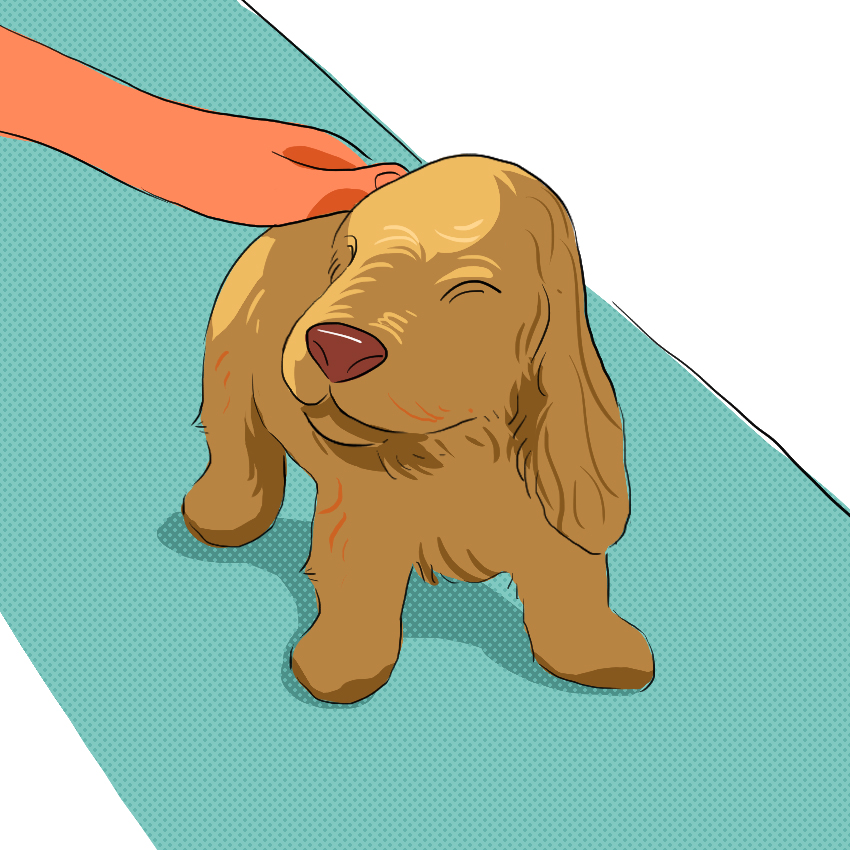
The bathtub can be a slippery place for humans, and it can be just as precarious for your puppy. Using a rubber bath mat can help your pup get a better grip while being washed and prevent slipping and falling down. The mat also helps protect the surface of your bathtub or sink from scratches.
Use Lukewarm Water, and Get Your Puppy Used to Being Wet
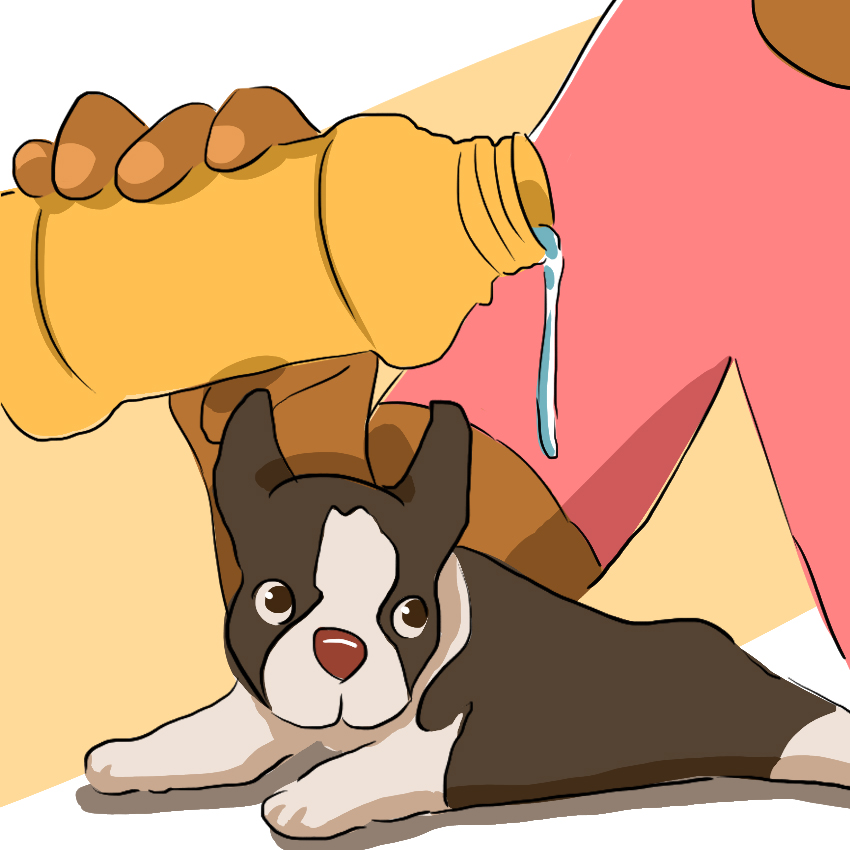
To help get your puppy used to the water, make sure to take it slow and use lukewarm water. Don’t ever use cold water because it can be too much of a shock for young puppies, and hot water can hurt their sensitive skin.
First, gently dribble or spray the water onto your puppy’s back to help her adjust to the temperature. From there, continue to pour the water slowly as you wash while using a positive and calming voice.
Don’t Get Water or Soap in Your Puppy’s Eyes, Ears, or Nose
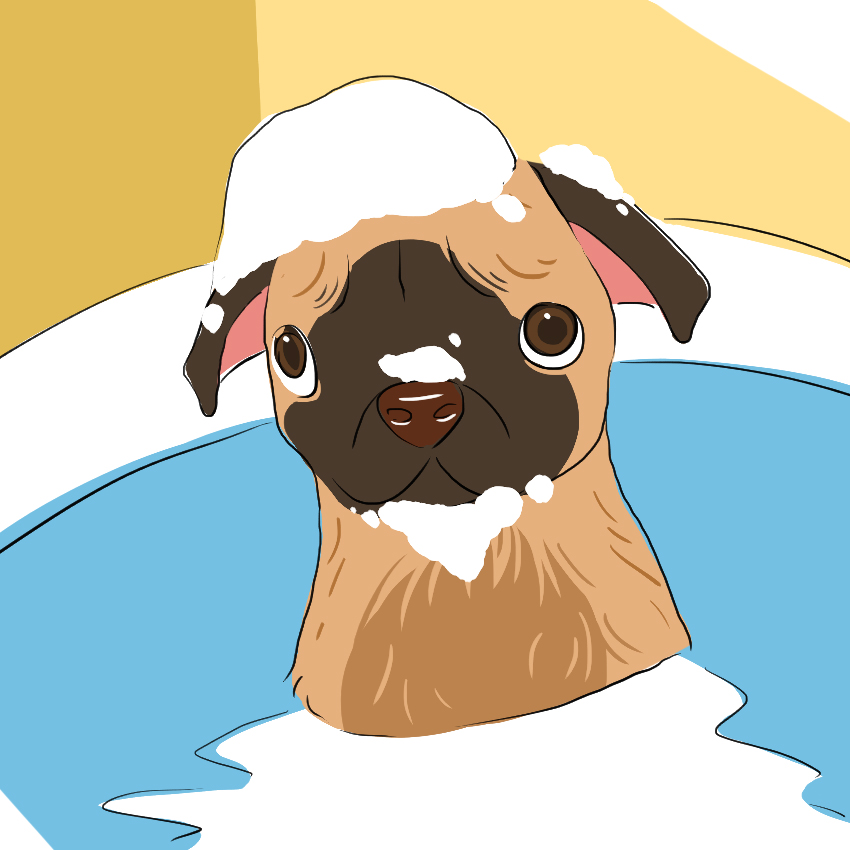
When pouring water on your puppy, make sure to avoid her eyes, ears, and nose. Water or soap in your puppy’s eyes can cause irritation and discomfort. Your dog's ears are not designed to thoroughly get rid of water, and if water becomes trapped in the ear, it can lead to fungal or bacterial infections. And water in your pup's nose can cause breathing issues, among other problems.
To properly wash your puppy, always start with the back of the head and neck, then work your way down to the chest, legs, and paws. Massage the soap into your puppy’s skin, and then rinse in the same downward motion.
Check for Lumps, Scrapes, or Rough Patches
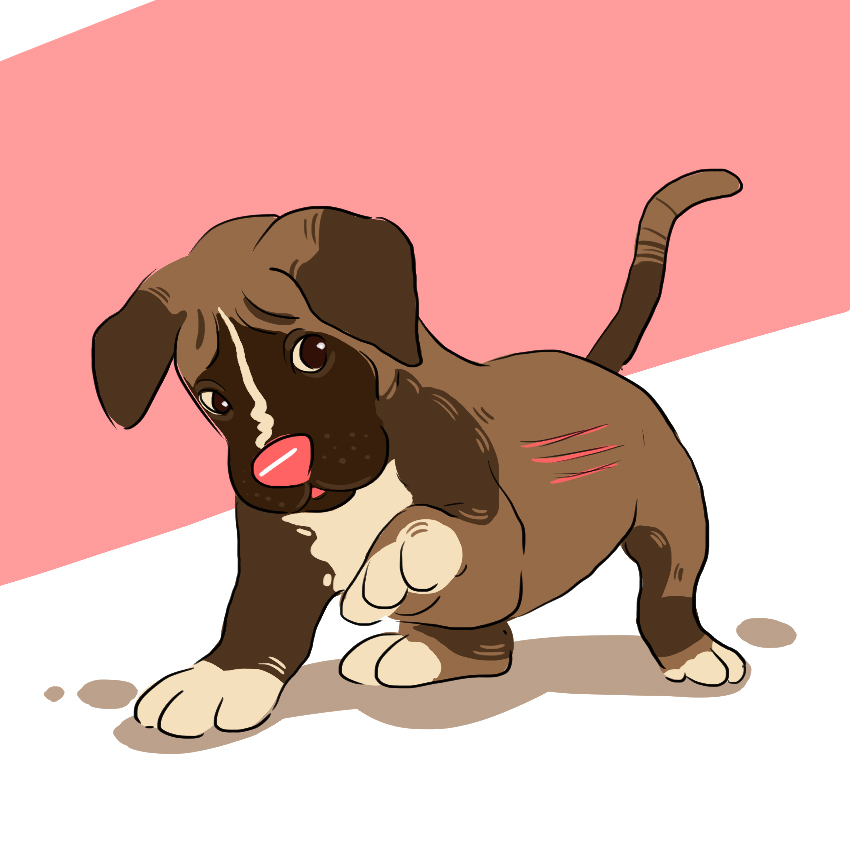
Bath time is an ideal opportunity to check your puppy for any skin irregularities or injuries. While you're massaging the shampoo over your dog, feel for any rough areas, bumps, scrapes, or scratches. If anything seems out of the ordinary and you're concerned, contact your dog’s veterinarian.
Rinse Your Puppy Well
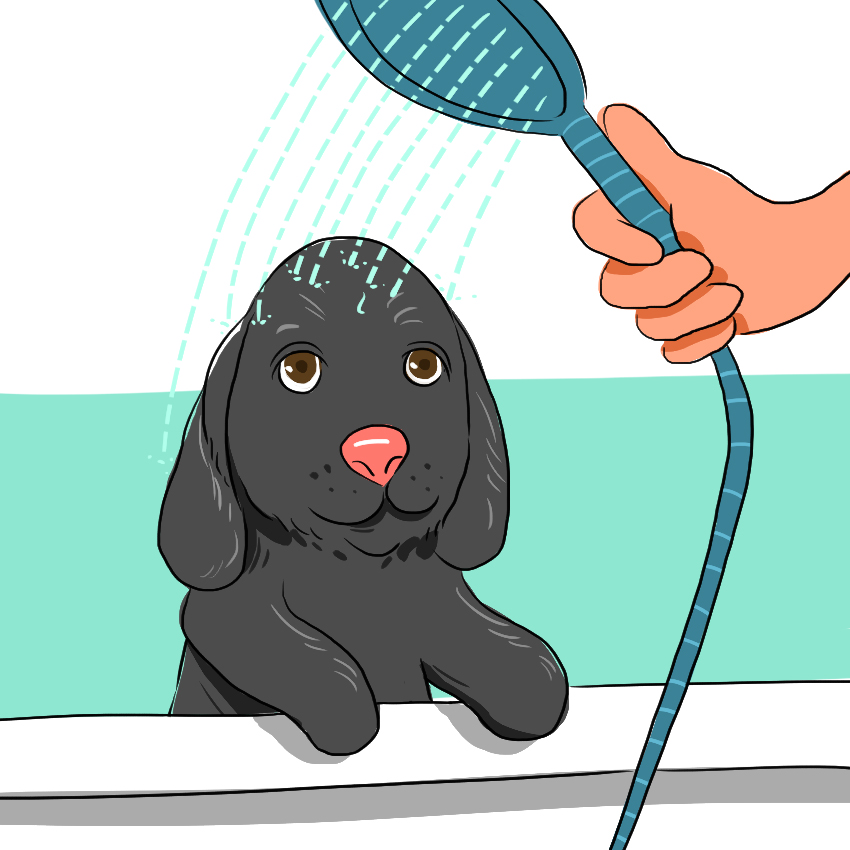
When you’re rinsing your puppy, be thorough. Any leftover shampoo residue on your dog's skin could cause itching and flaking. Rinse your puppy’s coat well with lukewarm water, then run your fingers through to make sure there are no suds left on the skin.
Prepare for the Shake
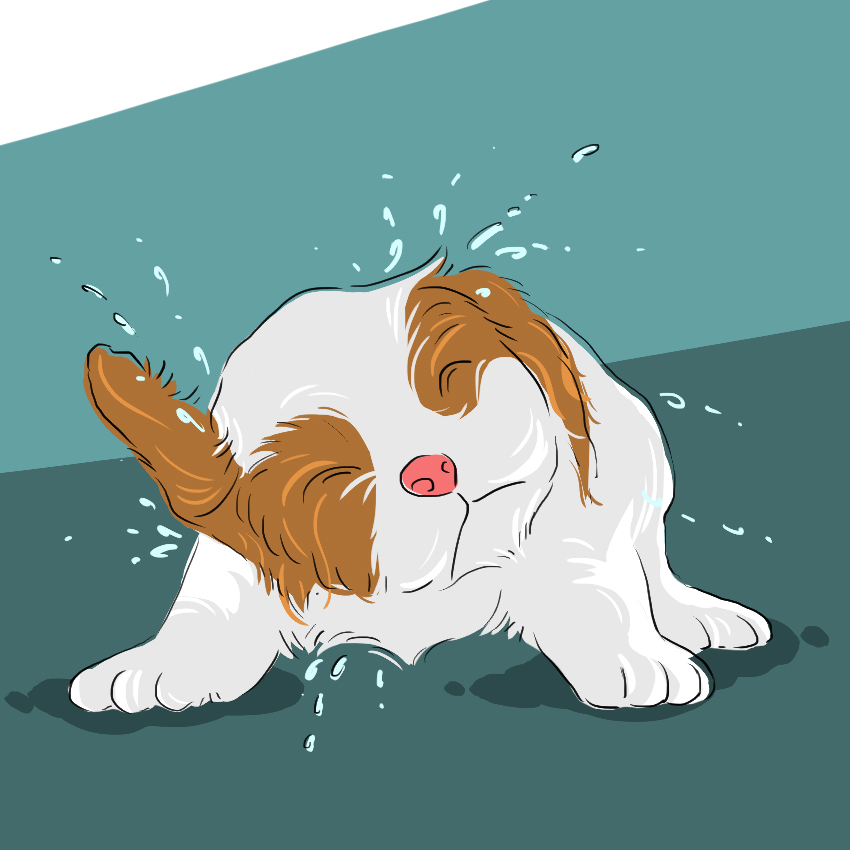
It’s not a secret that dogs love to shake themselves off when they’re wet, but there a few ways that you can stop or delay this behavior before your walls wind up taking a bath as well.
The shaking movement usually starts at the dog’s head, so try to hold your puppy’s noggin still in order to gently limit her movement. Using a towel right away on your dog is also a way to shield the effects of a fully wet shake.
If you have the patience, you might even be able to train your dog to shake on command in a place where you don’t mind it happening. Try a sit/stay method, and if your pup attempts to shake while standing, then quickly move her back into a sit before giving the command to shake followed by praise if she does as she's told.
Drying Your Dog
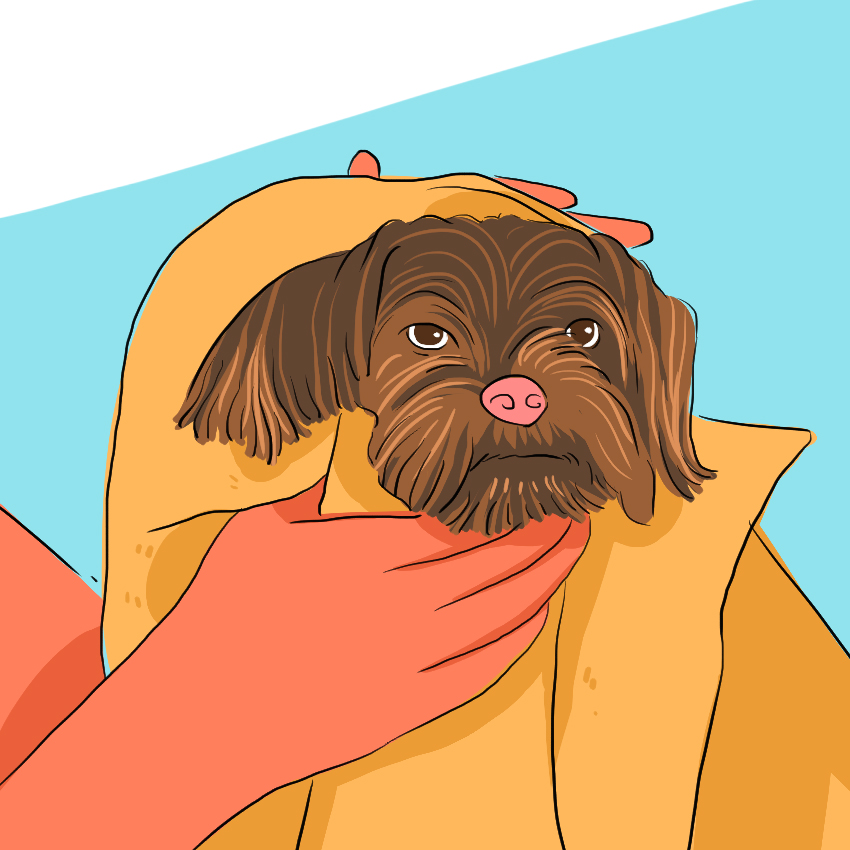
You can simply use a towel to get most of the sopping water off your puppy and then let her air-dry afterward. If you want to speed things up by using a blow dryer, be sure to keep it at a low setting, and don’t blow the air into your puppy’s eyes, ears, or nose. Also, prevent burns by keeping the blow dryer a safe distance away from your dog.
Prepare for Post-Bath Behavior
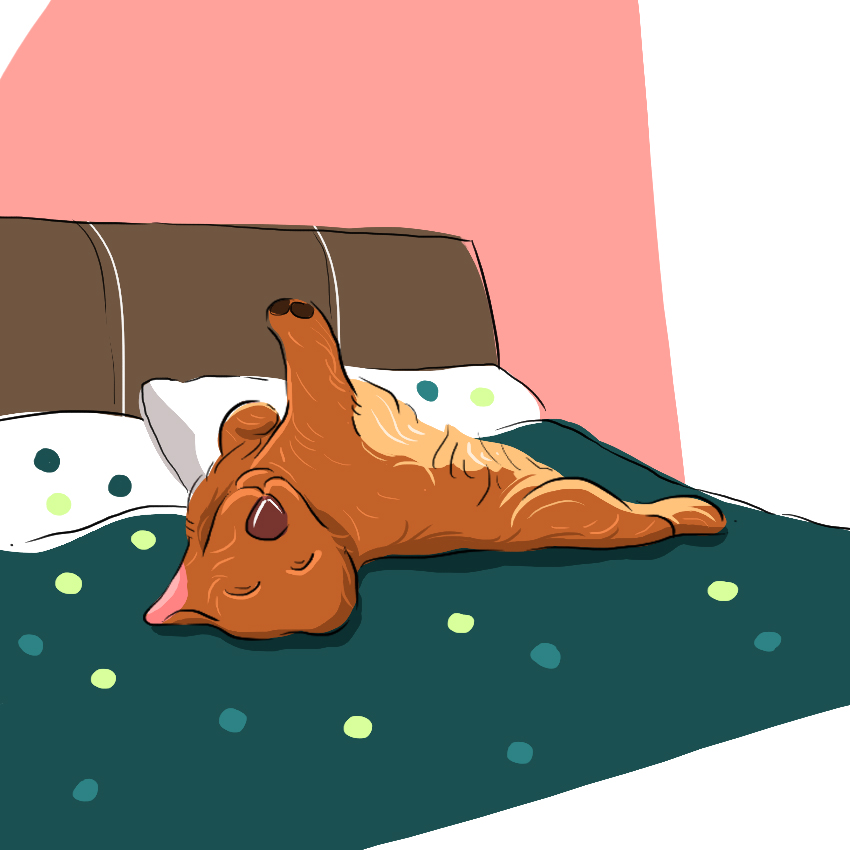
Whether it’s to finish drying themselves, to brush off that new weird (to dogs) shampoo scent, or just to celebrate the fact that tub time is over, pups may indulge in some wild post-bath behavior. Try to do a really good towel-dry so that your dog won’t soak the carpets or furniture when she rubs herself on every fabric-covered surface. Also avoid letting your dog run outside right away — otherwise, it could mean going right back into the bath.
Flea Baths
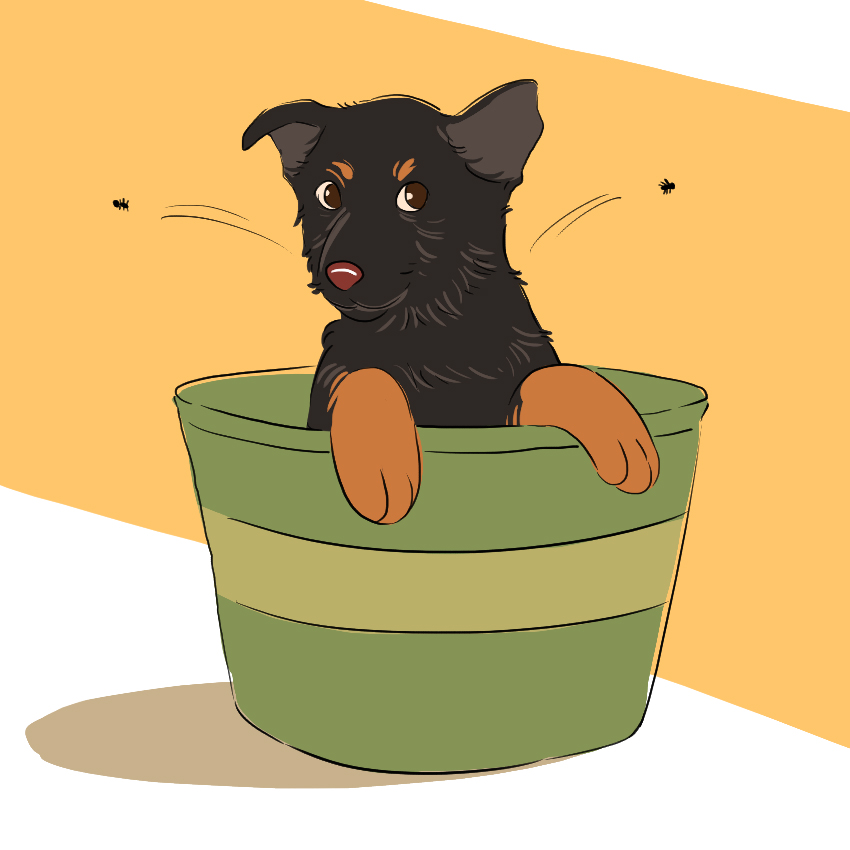
For puppies who have fleas, giving a flea bath is similar to the regular bath routine, with a few minor adjustments.
Apply flea shampoo to your puppy’s neck and back, and massage it thoroughly into your dog’s coat and onto her skin. Work your way downward, creating a good lather over the rest of the body. Avoid the eyes, nose, and ears when working in the shampoo, and leave the lather on your dog for about five minutes before rinsing thoroughly. Then run a flea comb through your puppy’s coat to remove any remaining fleas or eggs.
Also, give your puppy plenty of love, because having fleas is even worse for your puppy than it is for you watching your beloved pet suffer from an icky infestation.
Happy bathing!

